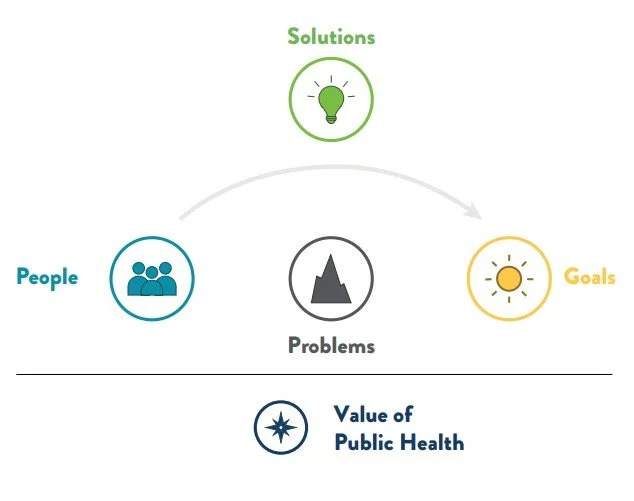A Guide for Public Health Storytelling
By: Jenna Olson
As part of their quest to build support for a robust and seamless public health system, over a year ago Minnesota’s Joint Leadership Team hired Hattaway Communications to create a messaging toolkit. The aim is to help public health experts at all levels discuss their work, goals, barriers, and practical solutions to strengthen the system. Based on research-driven models for motivating people to action, Hattaway staff also conducted in-depth interviews with 42 public health experts, elected officials, and community partners from all corners of Minnesota—including the Northeast. The resulting framework helps articulate how public health can benefit all people and communities, and what supports make that possible.
I’ll give you the short-and-sweet version. (A core tenet of the InfraBlog!) The basic framework looks like this:
What I see when I look at this is a story. (I am former English teacher, after all.) It reflects the most basic narrative structure found in cultures around the world. We have a relatable protagonist trying to reach a meaningful goal. They encounter obstacles along the way and must lead with their values* to find solutions.
This is a resource for helping you convey the impact and potential of your work. It can help recruit champions—from colleagues and partners to community leaders and policy makers—who could help remove barriers and solve problems that get in the way. There is a 1-minute message included in the toolkit that you can use verbatim, but it’s most useful as a guide for creating your own 1-minute messages about work that matters in your community.
If you’re ready to dig deep on this, you can download the full toolkit from the Minnesota Department of Health. If you’re interested in a presentation and message development practice for your team, reach out to me at Olsonj1@communityhealthboard.org.
* We can talk about value in two different ways with this framework. Values can mean our principles and judgements about what’s important (such as opportunity, unity, or fairness). We can also talk about value in terms of money saved or quality added. For some audiences, like those tasked with balancing budgets, that might be the most effective way to incorporate value into your message.
